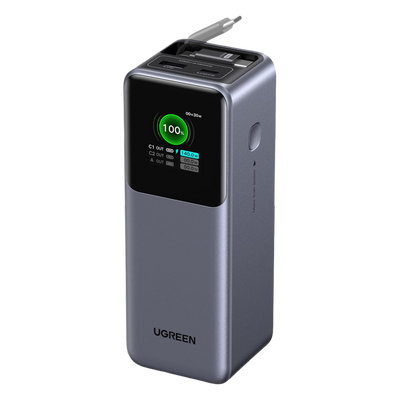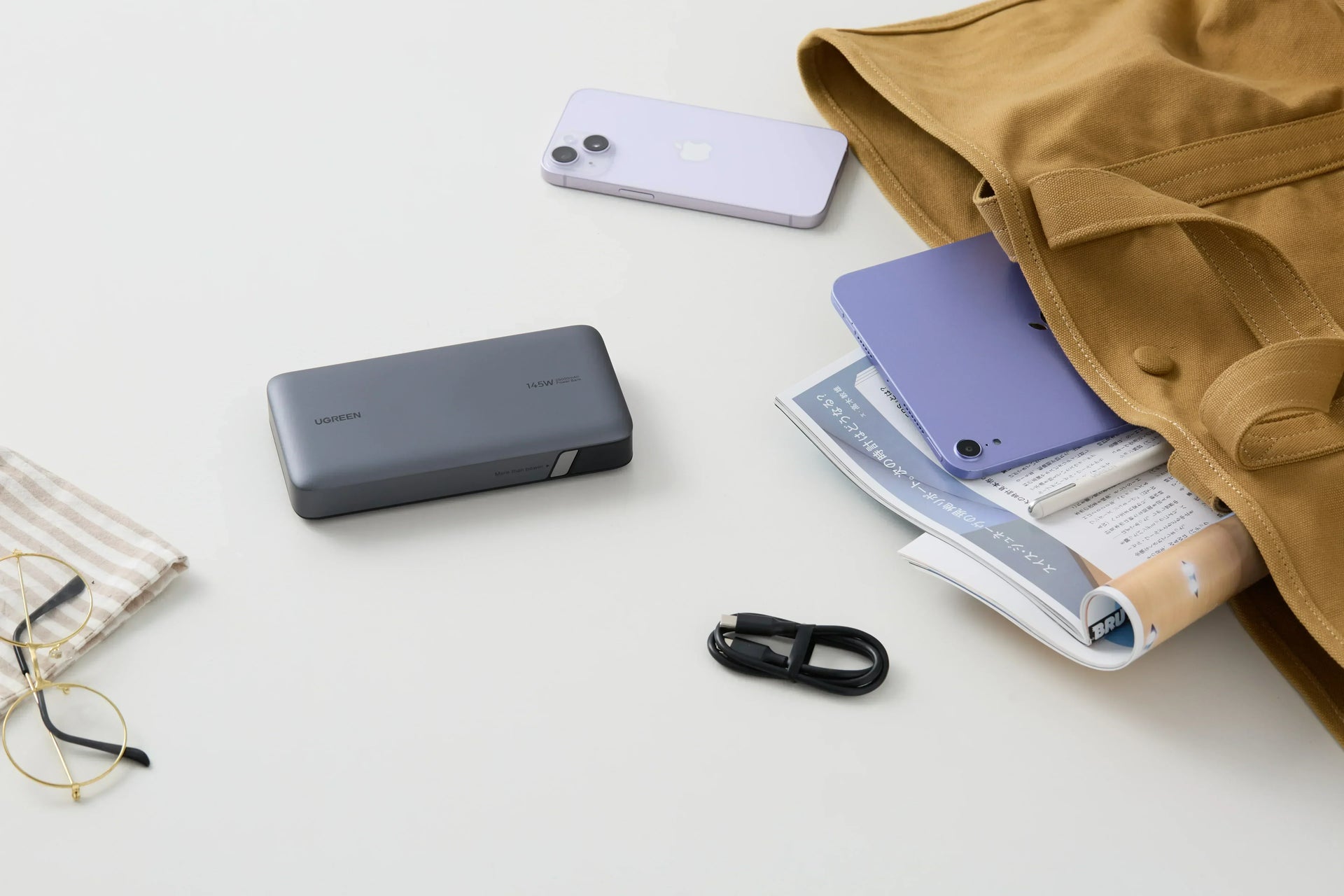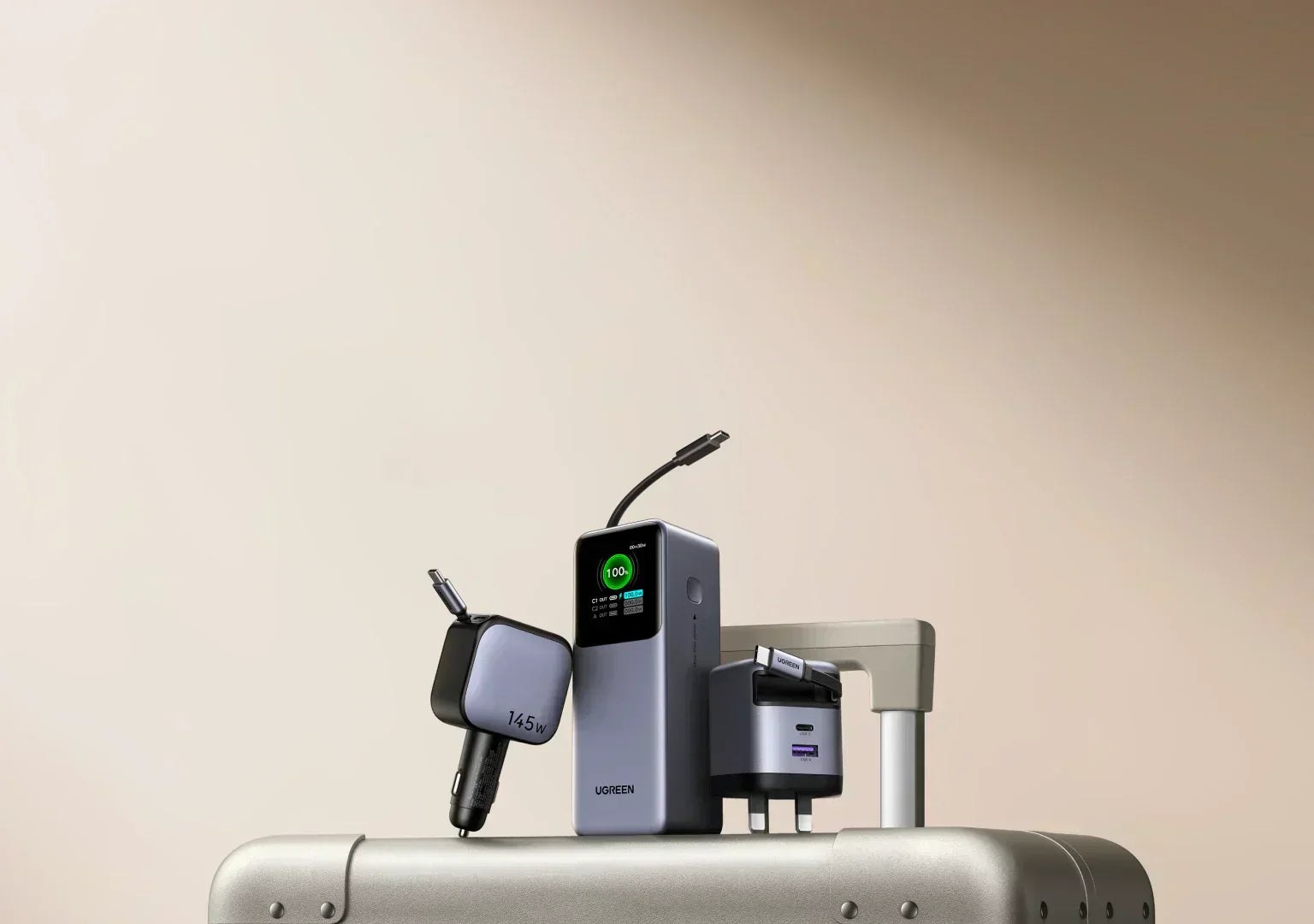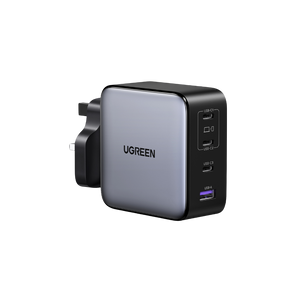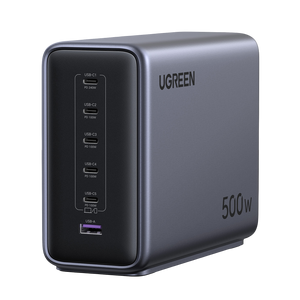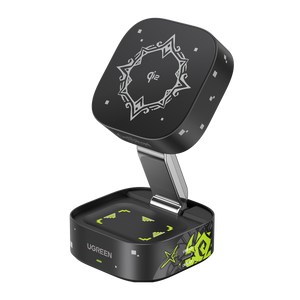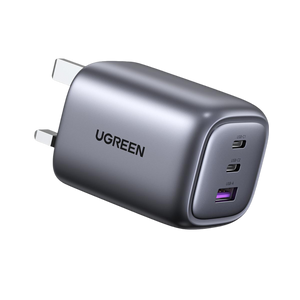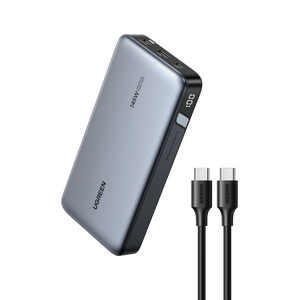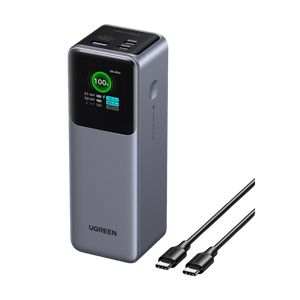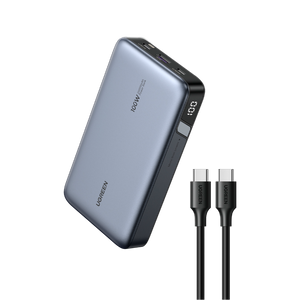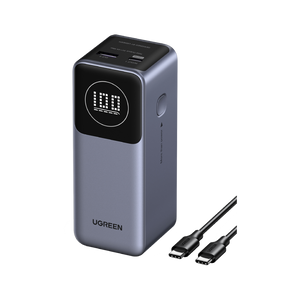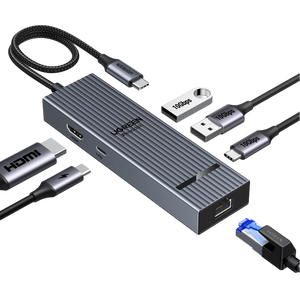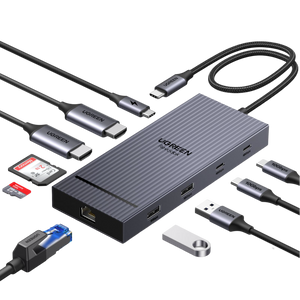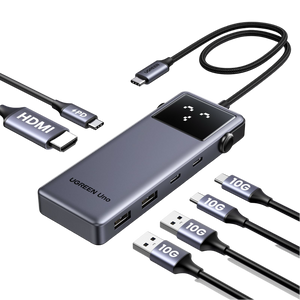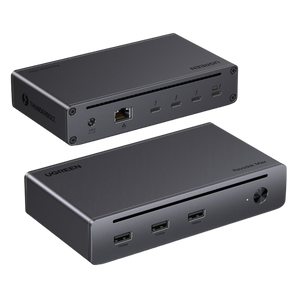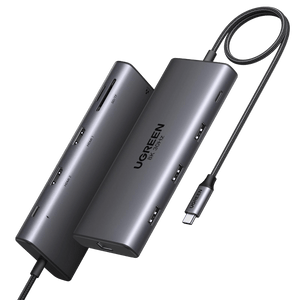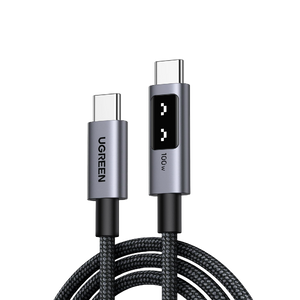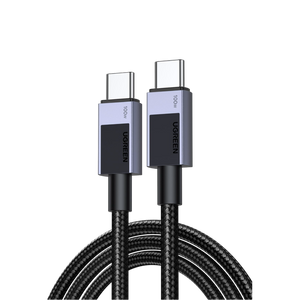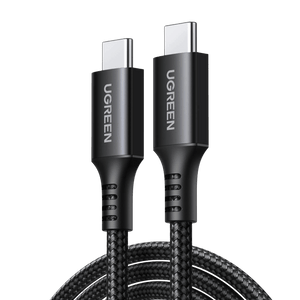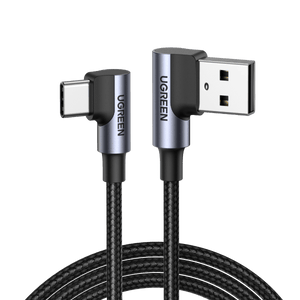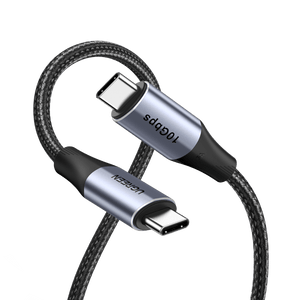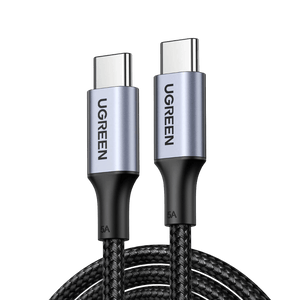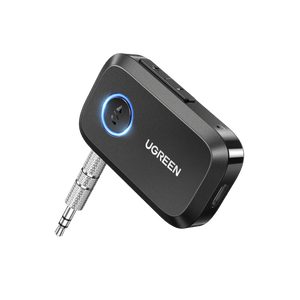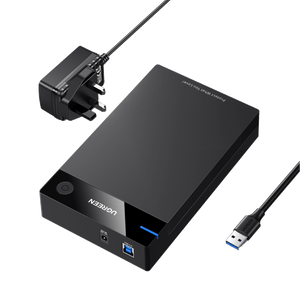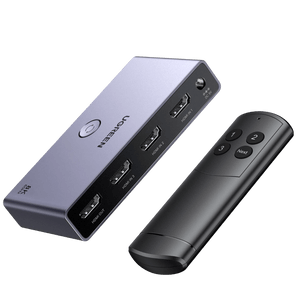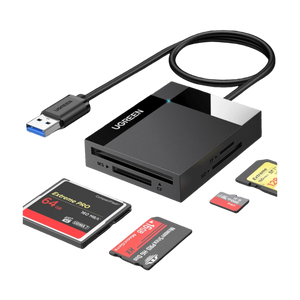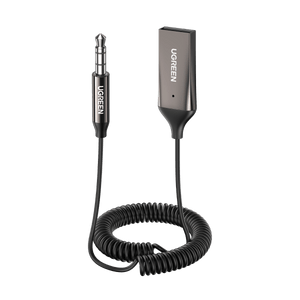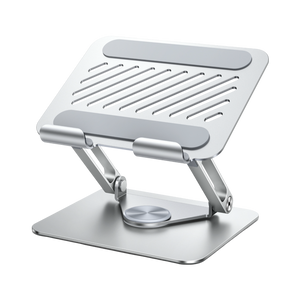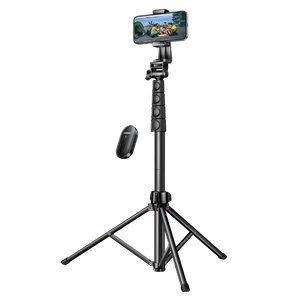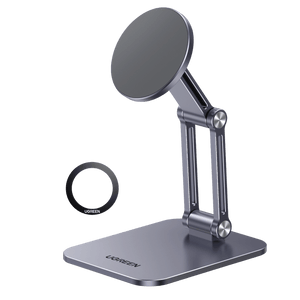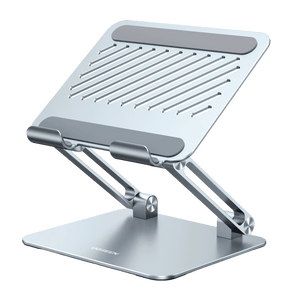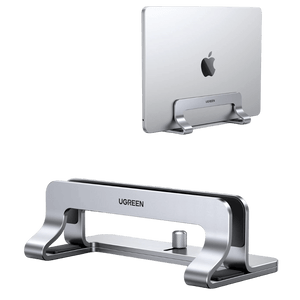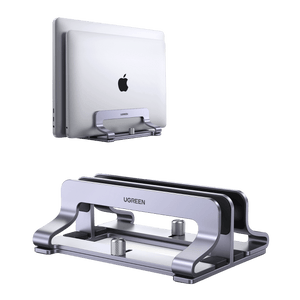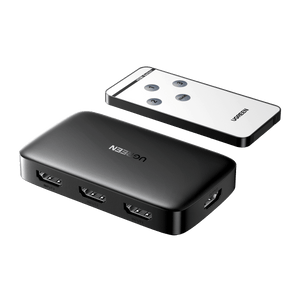Why Your Power Bank Drains Fast — Causes & Fixes in 2025
You’ve probably relied on a power bank during a trip, expecting it to keep your devices running for days. Yet by the second charge the battery percentage is dropping quickly, and that 20,000mAh label suddenly feels misleading. It’s a common frustration, especially when charging multiple devices at once or powering energy-hungry gear like laptops.
The reality is that even the best 20,000mAh power banks never deliver their full advertised capacity. Between 30 and 40 percent can be lost through heat and voltage conversion alone. Add in self-discharge, background drain from cables, and temperature effects, and that “all-day” charger often falls short of expectations.
In this article we’ll break down the real reasons why power banks seem to drain faster than expected. We’ll look at hidden inefficiencies, everyday user habits, and practical ways to get more reliable performance. We’ll also highlight how to choose high-quality models that match your actual charging needs.

How Power Banks Drain Power
You’ve likely experienced this: you purchase a 20,000mAh power pack, and yet your phone (with a battery of roughly 4000mAh) only manages two or three charges before the pack itself is exhausted. On paper that doesn’t make sense. But here’s the truth: the figure stamped on the label is an idealist fantasy rather than a promise. Under real-world conditions, energy is lost in conversion, heat, standby drain, and natural degradation. Let’s break down the main reasons why your power bank is losing power faster than expected.
Battery Capacity vs. Actual Usable Energy
All those big numbers printed on your power bank, whether 10,000mAh, 20,000mAh, or even 30,000mAh, are measured under ideal laboratory conditions, not under real-world usage. Manufacturers also use the natural voltage of the battery cell, about 3.6–3.7 volts on average. A freshly charged lithium-ion cell is 4.2V new and falls to about 3.0V when depleted, so 3.7V is taken as the “nominal” midpoint.
Now, here’s the key: your phone doesn’t charge at 3.7V. It expects 5V, 9V, 12V, or even 20V, depending on the protocol. To deliver that, the power bank uses a converter to boost the voltage, and no converter is perfectly efficient. Some energy always disappears as heat.
Here’s the simple maths:
Energy (Wh) = Capacity (mAh) × Nominal Voltage ÷ 1000.
Thus, a 10,000mAh pack × 3.7V = 37Wh of reserved energy. After conversion losses, about only 6,000–7,000mAh of charge really reaches your device. Which is why a “10,000mAh” pack will actually only give you two complete phone charges, not the three you were expecting. It’s like a bucket of water with some holes in it. The bucket can hold 10 litres of water, but when you get to the garden, some has leaked out.
Conversion Efficiency and Power Loss
Now let’s see what’s going on inside. Power banks contain buck and boost converters. These are circuits that regulate voltage so your phone gets exactly what it needs. These are smart circuits, but they are flawless. Even high-end chips manage only 85–95% efficiency. That leaves at least 5–15% of energy wasted as heat with each charge.
Fast-charging standards add another wrinkle. USB Power Delivery (PD), Quick Charge (QC), and PPS crank up voltage to push energy faster. This is convenient for quick top-ups during a short break, but all that speed generates extra heat, resulting in even more energy wasted. Wireless charging is even worse. Qi and MagSafe chargers hover around 70–80% efficiency, so nearly a third of your precious stored power evaporates before your phone ever sees it.
Design and brand are important as well. High-quality brands like UGREEN are engineered with advanced chips to regulate heat and optimize efficiency. In contrast, cheaper models usually skip such refinements. The result? They feel warmer to the touch, drain faster, and experience greater capacity loss over time.
Self-Discharge and Standby Loss
Even in inactivity, your power bank is silently shedding power, in a process called self-discharge. This is an intrinsic property of lithium chemistry. On average, you would lose 2–3% per month. That doesn’t sound like much, but at the end of a year, an unused bank can be half-dead in a drawer.
Extreme environments can increase self-discharge rates. For instance, if you leave your power bank in a parked car, the internal chemistry can lead to quicker drainage. Place it in a humid space, and you risk circuit leaks or corrosion. While a USB-C cable left connected can continue to draw power even without a phone plugged in. Other components like LEDs, monitoring ICs, and cheap circuits can also lead to gradual energy loss. To reduce the self-discharge rate, do not let it sit idle for months. Refill it every couple of months, and keep it at around 50% charged in a dry, cool place.
Battery Aging and Cycle Life
Finally, the biggest contributor: time. Like people, batteries age whether you use them or not. A good lithium battery typically has a lifespan of 300–500 full charge cycles. Which translates to about two to three years of steady use. Beyond that, you’ll begin to notice capacity loss. A once powerful 20,000mAh pack may perform more like a 15,000mAh pack.
Why does this happen? Each time a battery is charged or discharged; the battery’s internal structure undergoes changes. Resistance builds up, meaning less energy enters and exits the battery. Add in excessive heat, frequent deep discharges, and constant fast charging, and aging accelerates.
How do you know yours is aging? Watch out for these signs:
- It charges fewer phones than it once did.
- It gets hot with light usage.
- It takes noticeably longer to charge.
- The LED indicator displays wrong charge levels.
When you see these signs, it’s generally wiser and safer to replace the bank rather than getting the last percent or two out of it.
Common Habits That Make Power Bank Drain Fast
When a power bank drains too quickly, it’s not necessarily due to a bad battery. Instead, everyday habits, those little things we take for granted, can silently deplete stored energy. Here are four of the worst offenders and why they matter.
Charging Multiple Devices at Once
Imagine you’re sitting at an airport gate with your laptop, phone, and earbuds all plugged into a single bank. Within minutes, your phone drops out of fast-charging mode, your laptop creeps up at snail speed, and the pack’s battery level plummets. Frustrating, right?
Many people mistakenly believe that “big capacity” means all ports can be used freely. In reality, most normal banks split their total output evenly. It’s like sharing a pizza with three people. If one person is particularly hungry (your laptop), they won’t get enough slices. While smaller eaters (your earbuds) receive more than they should. Furthermore, energy loss from conversion can generate heat, which wastes even more energy.
The solution lies in smart banks with intelligent port allocation. These clever chips can allocate power where it’s needed most. This ensures your phone stays fast-charged without starving your laptop. Without them, charging multiple devices will always be suboptimal.

Using High-Power Devices
Now imagine charging a laptop during a long Zoom session. In one hour, the bank percentage goes down alarmingly fast. The most common reaction is to think, “The battery must be bad.” The truth, however, is that power-starving devices consume a lot of energy.
A normal laptop needs 45–100W. New phones guzzle up to 65W with PPS fast charging. Compare that to earbuds drawing only a few watts, and it’s clear why your power banks seem to drain so rapidly. Even a big 20,000mAh pack will get depleted in two hours under heavy demand.
Think of it this way: powering a laptop using a power bank is the same as trying to fuel a car using a water bottle. The bottle isn’t broken; it’s just too small for the job. If high-demand devices are part of your day-to-day usage, you need a bank built for them. Brands like UGREEN have packs with 145W and above for that very purpose.
Long-Term Idling and Incorrect Storage
Here is another scenario: you remove a bank from a drawer after several months and find it dead or malfunctioning. Immediately, it’s branded as “cheap” or “defective.” In reality, what’s really happening is self-discharge, which is a normal feature of lithium batteries.
All power banks will lose 2–3% of their charge per month when unused. Store one in a glovebox at 40°C, and the chemical reaction drains much faster. Extremely cold temperatures slow down reactions and can leave the pack in an unstable condition. Over time, cells age, and the lost capacity doesn’t come back. To prevent these problems, manufacturers suggest storing banks at around 50% charge. Also, keep them in a dry, cool place if you will not be using them for weeks.
Use of Incompatible Charging Cables or Adapters
Finally, let’s talk about the cable drawer. Most people believe that any USB cable will suffice. But cheap or overly long cables introduce electrical resistance, which means wasted energy in the form of heat. Additionally, if the fast-charging protocol (PD, QC, PPS) of your phone isn’t supported by the cable, the phone may switch to a slower mode. This forces your bank to work harder and for a longer period, which can reduce its lifespan.
Maximize Your Power Bank Utilization
Match Capacity and Power Output to Your Devices
When choosing a power bank, think beyond just the capacity (mAh) printed on the label. What really matters is how that energy is delivered. A laptop might need 45–100W, while a high-end phone on PPS fast charge can pull 65W. If your bank can’t keep up, the device drops to slow charge, efficiency plummets, and the pack feels like it’s draining too quickly.
For regular everyday phone use, a 10,000mAh bank with 20–30W output is sufficient. But if you’re traveling with a phone and laptop, look for at least 20,000mAh with 100W or higher. The UGREEN Nexode Power Bank 20000mAh 165W with Retractable USB-C Cable nails it just right: providing 100W for one device and 65W for another. They also allow you to quickly charge your phone while powering your MacBook at the same time.

Use Compatible Fast Charging Protocols
Both your power bank and device need to “speak the same language” to enable fast charging. USB Power Delivery (PD), Quick Charge (QC), and PPS all manage voltage differently. If they don’t match, your phone reverts to a slow 5V/2A (10W) mode. That means longer charging times, wasted energy as heat, and a power bank that drains faster. The alternative is to use a bank with several standards backing it (PD 3.1, QC 4.0, PPS), coupled with certified USB-C E-Mark cables. That way, every watt of power is transferred smoothly and efficiently.
Avoid Simultaneous High-Power Charging
Charging a laptop (60W+), a fast-charging phone (30W+), and earbuds simultaneously is one of the quickest ways to damage a power bank. Older power banks can be limited in how they distribute power. This may force the laptop to operate slowly, the phone drops out of fast charge, and wasted energy manifests as heat.
The smarter strategy is to stagger the charging process. So, start by charging your laptop initially, then move on to smaller devices. If you really need to charge at the same time, get a model that has intelligent port allocation. Banks like the UGREEN Nexode 20,000mAh 165W detect demand in real-time. They will deliver 100W to a laptop, while providing 65W to a phone.
{{UGPRODUCT}}
Maintain Battery Health
Power banks don’t die instantly; they lose their capacity faster when used poorly. Lithium batteries naturally lose 3–5% of their charge every month. However, allowing them to fall to 0% or climb up to 100% for several weeks speeds up that decline. The second silent killer is heat: put a pack in a warm car at 60°C and the electrolyte inside breaks down, shortening its lifespan.
For a longer lifespan, keep your bank at 20–80% charge. Discharge it only when they’re full, and store it in a cool 10–30°C room. Also, cycle the power bank every few months to balance cells. By taking good care of your power bank, it will last for years. But if you neglect it, it can become “old” within just a few months.
Choosing the Right Power Bank
Choosing a power bank is more than just grabbing the biggest number on the box. All good power banks have these three things in common: battery cell quality, built-in safety features, and how much weight you’re willing to carry.
High-Quality Cells and Brand Reliability
Internally, most power banks use either 18650 cylindrical cells or lithium-polymer packs. The difference is significant: polymer cells are thinner and used in modern designs, but 18650s are cheaper but bulkier.
However, the most critical factor is the quality of these cells. Cheap brands often exaggerate capacity. While well-known brands like UGREEN use high-quality cells that maintain stable voltage and minimize wasted energy.
Safety Features
Good safety engineering is more subtle, but it is essential. Protection against overcharge, over discharge, short-circuit, and heat draws a little extra energy. But they prevent cell stress and even the risk of fire.
Portability vs. Capacity
Finally, ask yourself: do you want endurance or lightness? A 25,000mAh pack will power a laptop, but it can be cumbersome to carry in your backpack. A 10,000mAh slim bank is far more convenient for daily commutes, but will only give two full charges for a smartphone. The key to making an informed choice is to align the power bank’s capacity with your lifestyle.
Conclusion
If you notice your power bank draining too quickly, it doesn’t mean it’s faulty. The majority of the time, it is battery aging, conversion loss, poor usage habits, or incompatible devices. The good news is that you can address most of these issues with slight adjustments. The trick is to ensure that the capacity and wattage of the power bank are compatible with your devices. Also, use compatible fast-charging protocols, don’t leave your bank exposed to extreme temperatures, and store your bank at a healthy charge level. Most importantly, invest in quality. Quality brands like UGREEN use high-quality cells and smart management chips to offer longer runtimes with minimal energy loss.
FAQ About Why Power Banks Drain So Fast
What long should a power bank last?
Most power banks last for 2–3 years, which equals 300–500 charge cycles, before capacity begins to degrade. With good storage practice and high-quality cells, some last longer without a noticeable drop in performance.
Does using multiple devices damage my power bank?
It won't kill the bank outright, but heavy simultaneous loads generate heat and ageing. Power banks designed with smart allocation chips are more suited for multi-device charging. Because they distribute power efficiently instead of wasting it.
How to maintain battery health over time?
Keep the charge level between 20 and 80%, avoid deep discharge, and store in moderate temperatures. Every couple of months, it is advisable to do one full cycle to rebalance cells and prevent "sleep mode."
Why does wireless charging drain power faster than wired charging?
Wireless charging is usually 60–75% efficient, while cables are 85–95%. The consequence? Your phone charges more slowly, the power bank drains faster, and both warm up in the process.
Can extreme temperature permanently reduce capacity?
Yes, heat and cold are silent battery killers. At temperatures above 40°C, the liquid electrolyte in a lithium cell destabilizes, leading to rapid chemical degradation. At temperatures below 0°C, the ions do not move well, and they stress the cell to the extent of even causing plating damage.
